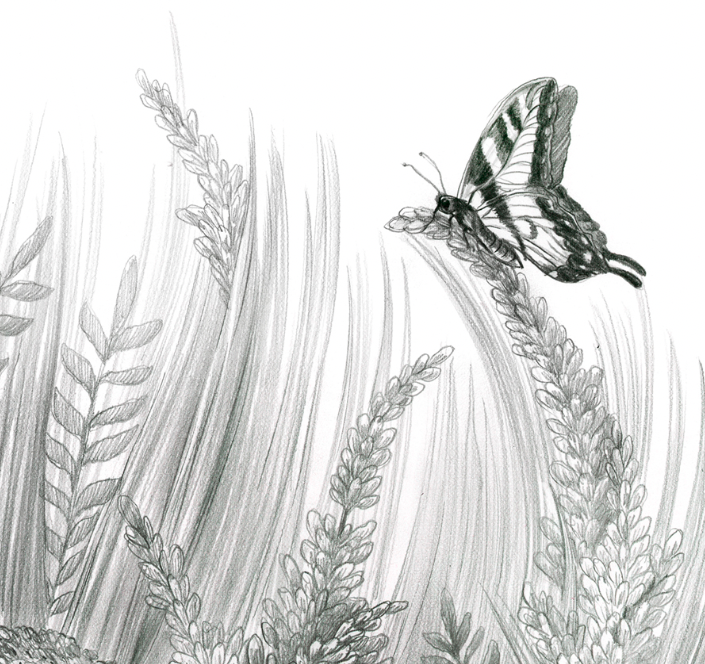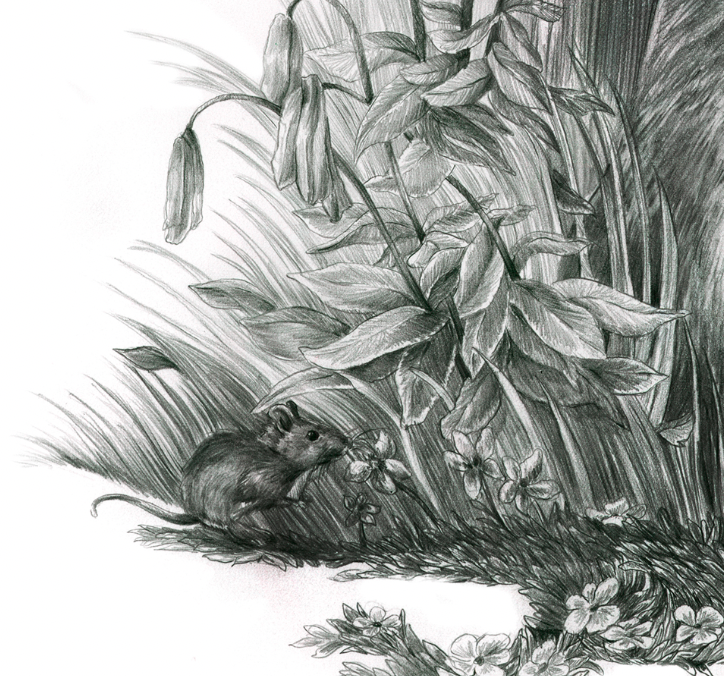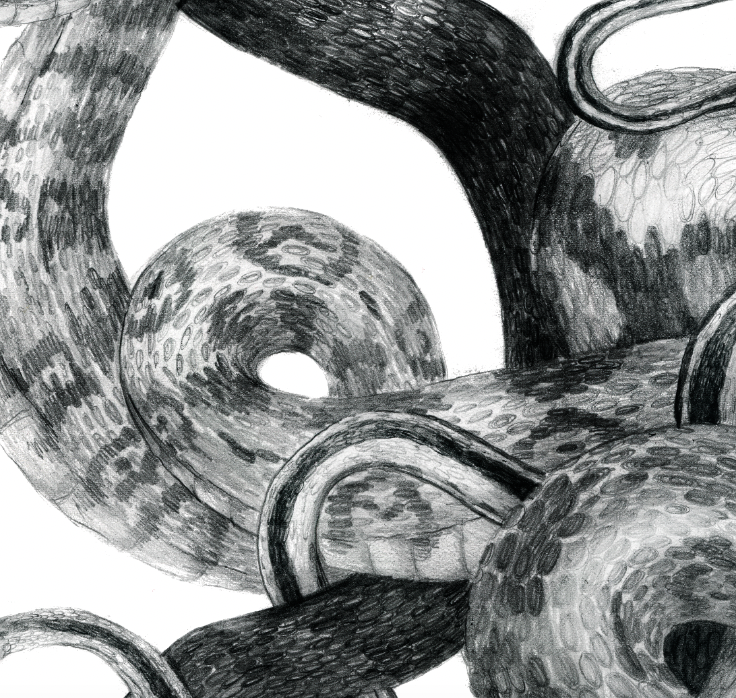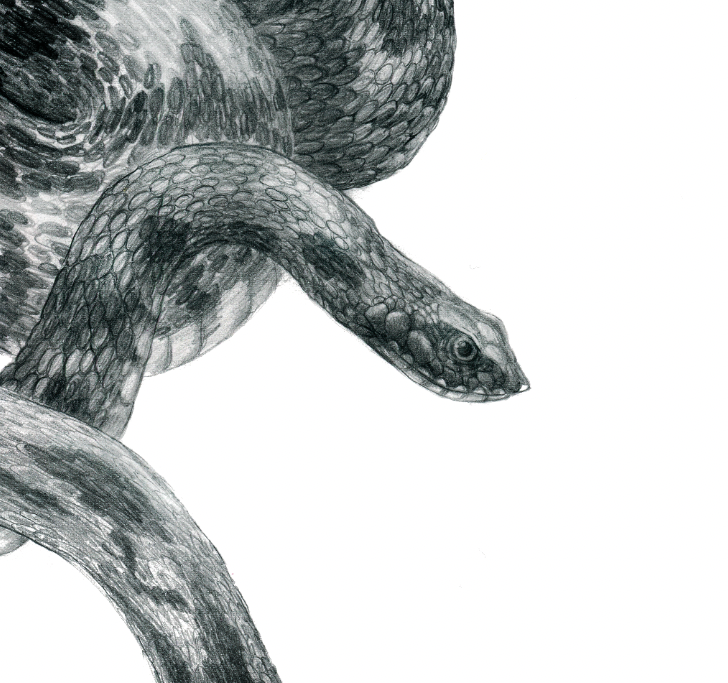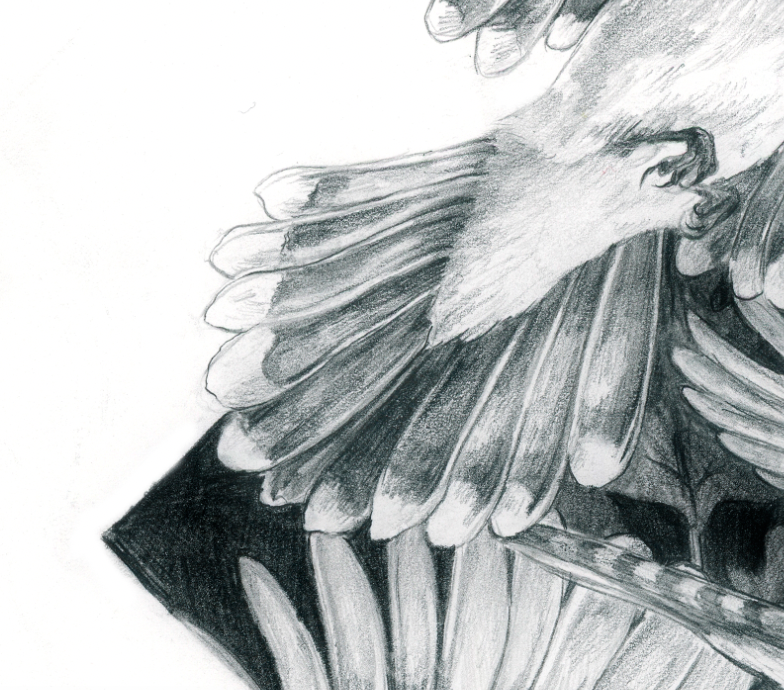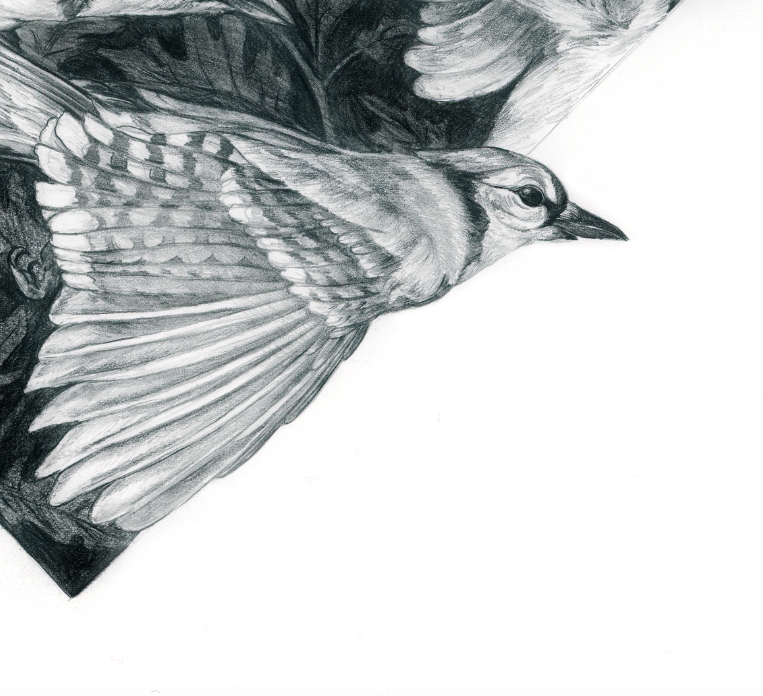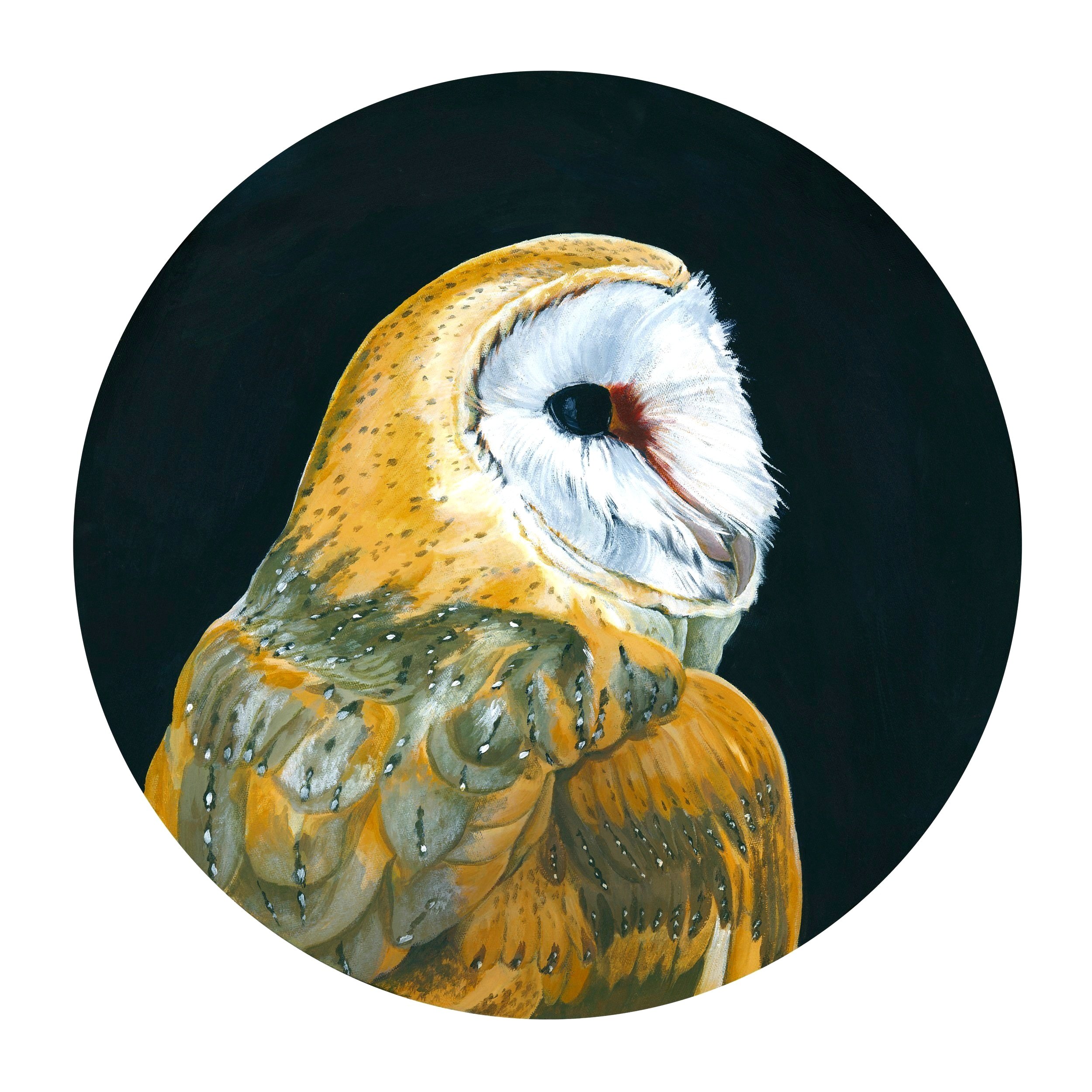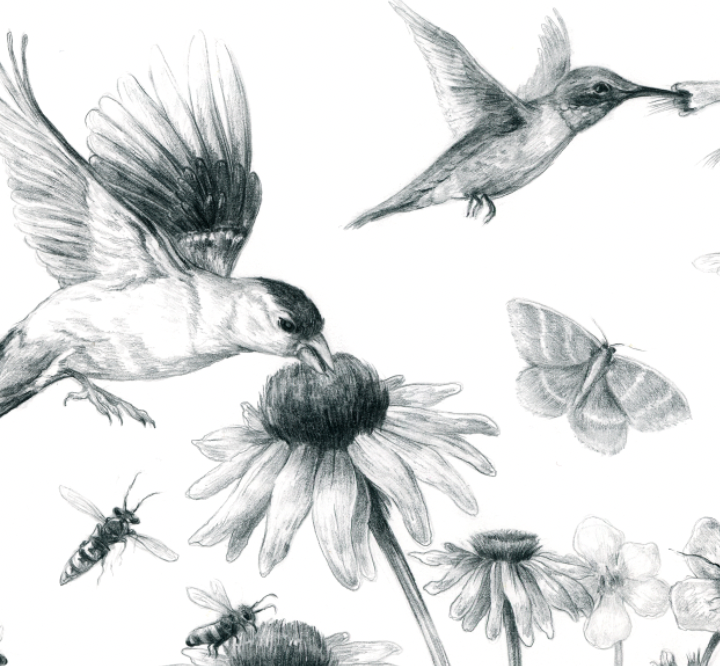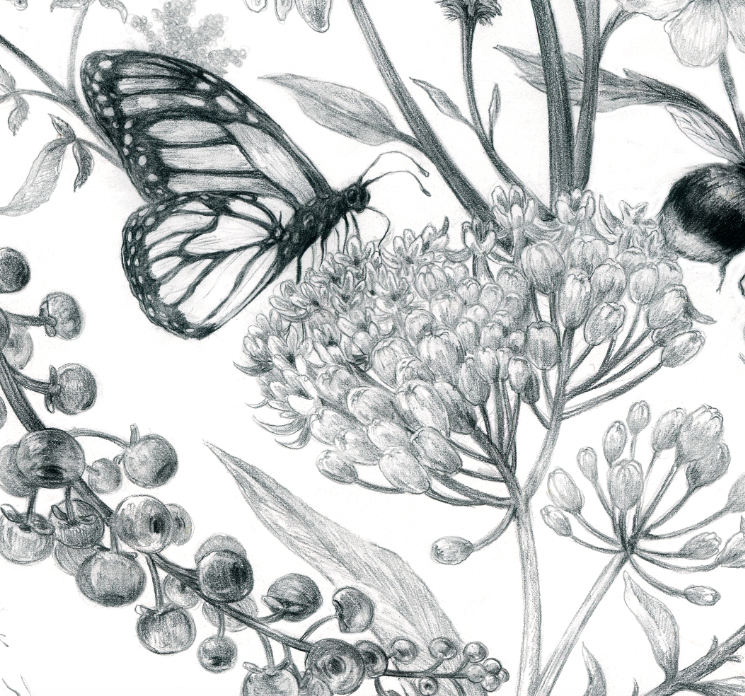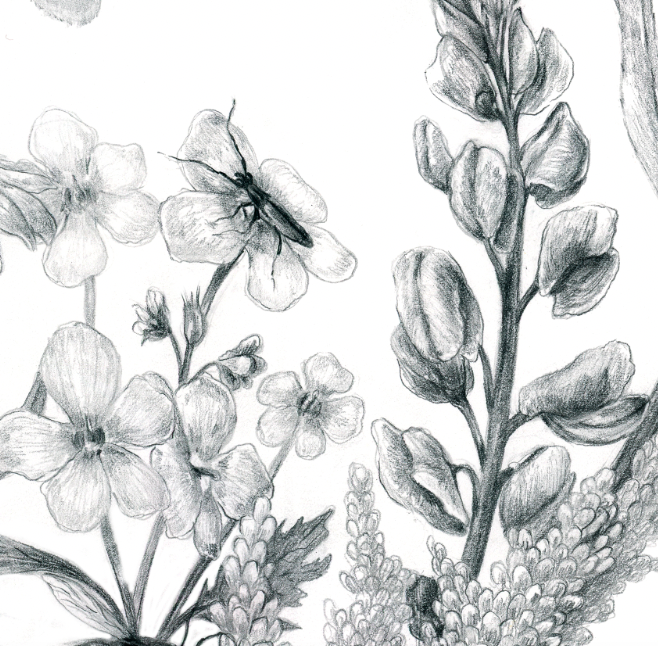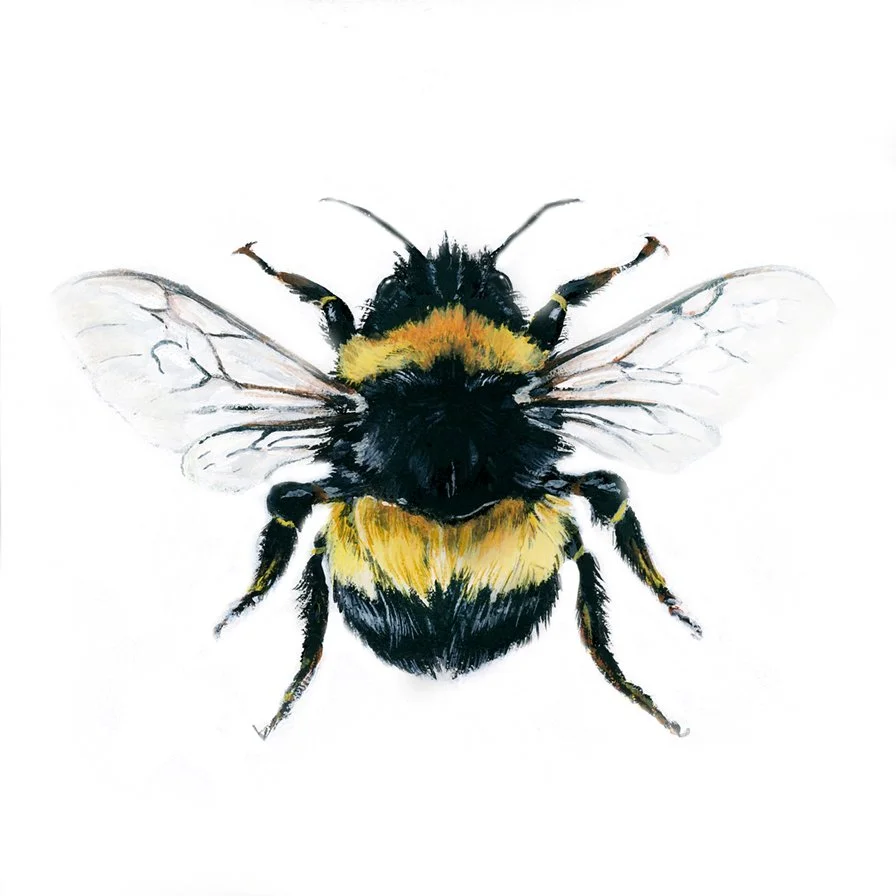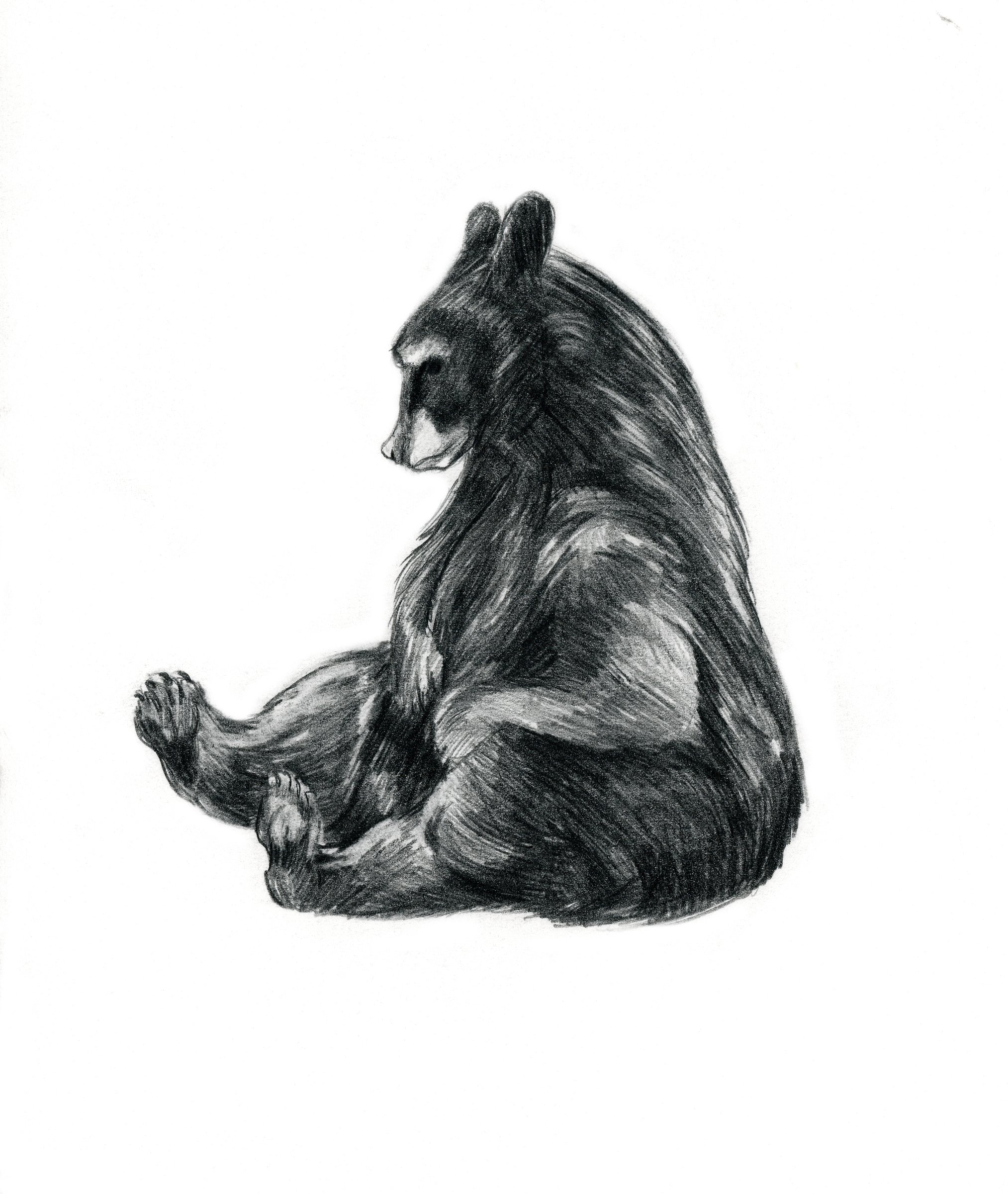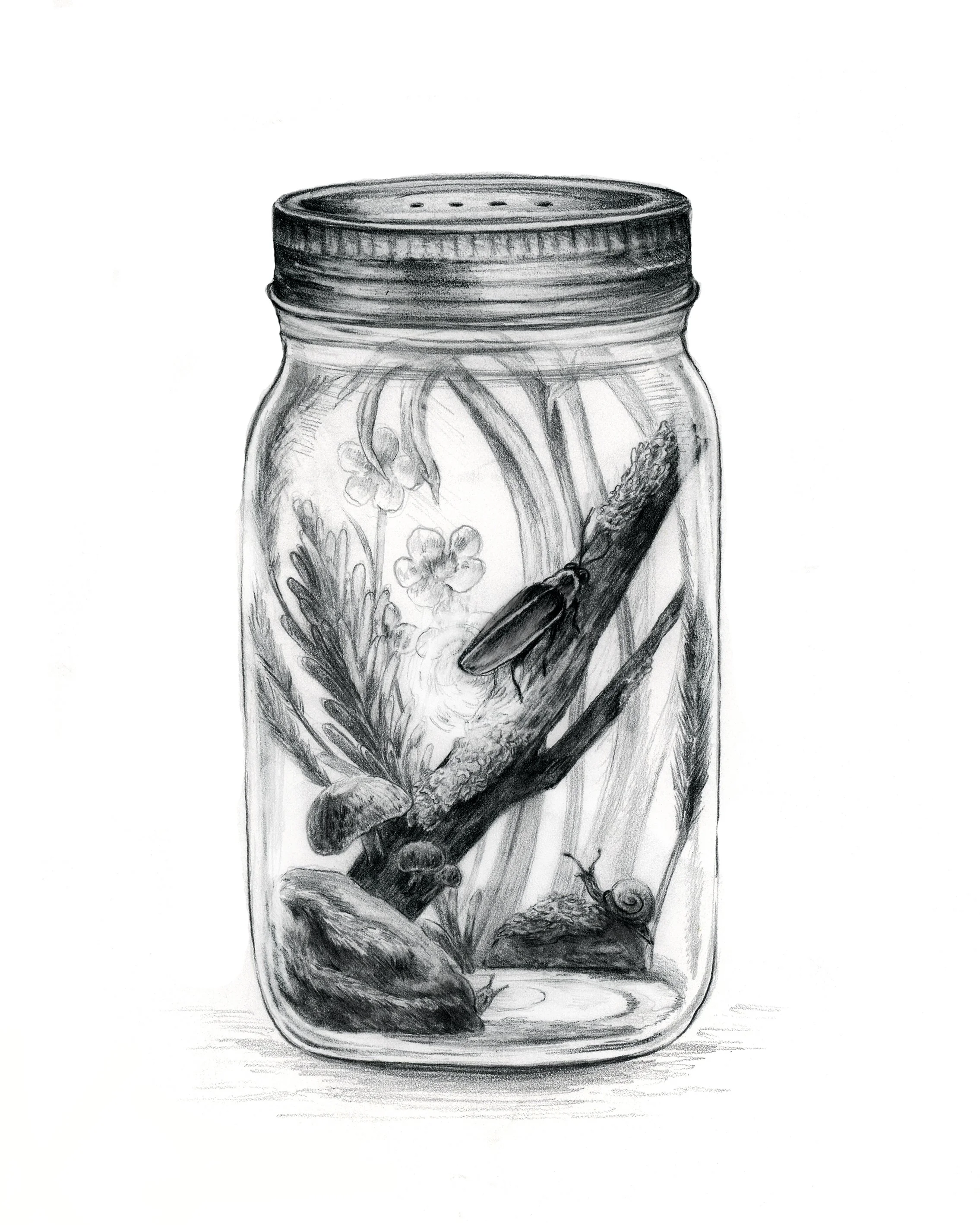The natural world around us is quite stunning, and there’s a remarkable variety. But we don’t always take the time to appreciate it. A glance at deer by the side of the road, a few moments admiring turkeys trampling through our grass, and after a few seconds, we move on.
The 40 pieces of artwork in Wild New England, highlight a small glimpse of the diverse flora and fauna we share our world with here in the Northeast. From tiny deer mice, to large birds of prey, there are beautiful creatures and plants among every nook and cranny of New England. Many of the flora and fauna pictured can be seen in our own backyards, or are just a short drive away. They aren’t always easy to find, but once you immerse yourself in nature, Mother Nature might surprise you.
It’s amazing what we can find right outside our back-door.
Wild New England is a collection of artwork that was started during my time as an artist in residence at the Farmington Valley Arts Center and completed over the course of a year.
Forest Fawn
Graphite on Paper
22 x 30”
2021
Click Here to Purchase
Baby deer are often left hidden by their mother, while she goes off to find food and forage. These fawns are often found in random spots, in the middle of a yard, in the middle of a field, and everywhere in between. The fawn waits for the mothers return, sleeping the day away. Mom will not return until it is safe so that she doesn’t draw the attention of predators.
Species
White-tailed deer (Odocoileus virginianus)
Eastern chipmunk (Tamias striatus)
Deer mouse (Peromyscus maniculatus)
Wild strawberry (Fragaria virginica)
Queen Anne’s lace (Daucus carota)
Goldenrod (Solidago sphaecelata)
Wild blue phlox (Phlox divaricata)
Eastern red columbine (Aquilegia canadensis)
Details
Cardinal Pair
Colored pencil on Paper
8 x 10”
2021
Click Here to Purchase
Male and female cardinals will work together to find the perfect nesting site. The male will then continue to help the female find nest material while she works diligently to make the nest for the eggs. The nest can be used multiple times during nesting season as cardinals will sometimes have two broods.
Species
Northern cardinal (Cardinalis cardinalis)
White-Lipped Snail
Colored pencil on Paper
5 x 7”
2021
Click Here to Purchase
Species
White-lipped snail (Cepaea hortensis)
Snakes of New England
Graphite on Paper
34 x 43”
2020
Click Here to Purchase
Five species of snakes that are commonly found around the New England area and here in Connecticut. We are fortunate to not have many poisonous snakes in our area, many in fact are friendly and often occupy gardens or barns.
Species (Left to right)
Eastern ribbon snake (T. sauritus)
Northern copperhead snake (Agkistrodon contortrix mokasen)
Black rat snake (P. obsoletus)
Timber rattlesnake (Crotalus horridus) Eastern hognose snake (Heterodon platirhinos)
Details
Flying (Away) Squirrel
Colored pencil on Paper
8 x 10”
2020
SOLD
Flying squirrels are incredibly small, about only 10 inches from head to tail. They don’t really ‘fly’ as their name may imply, but instead glide through the air from tree to tree in search of their next meal. Flying squirrels have flaps of skin along each side of the body called patagium, this parachute-like body part allows them to glide up to 500 feet. They can use their hands, feet and tail to propel and maneuver their flight.
Species
Northern flying squirrel (Glaucomys sabrinus)
Chickadee Feeding
Graphite on Paper
8 x 10”
2020
SOLD
During the fall season, when caching food becomes top priority, chickadees can actually grow their brain. Their hippocampus grows in size in order to remember their numerous food storage places. When winter comes and food sources become limited, they access this part of their brain to remember the hundreds of hiding places they’ve tucked seeds into.
Species
Black capped chickadee (Poecile atricapillus)
Pinecone Study
Graphite on Paper
5 x 7”
2021
Click here to purchase
Pinecones are a substantial food source for many Northeast critters, especially during the wintertime. Chickadees can often be found feeding like above off of pine trees.
Species
White spruce pinecone
Jay Migration
Graphite on Paper
22” x 22”
2020
Click Here to Purchase
Blue jays are one of many species that take part in partial migrations. About 20% of the species up and leave their year-round home to find more plentiful habitats during the winter months. Often in search of better food reserves, these migrations can occur with as little at 8 or 9 jays or as many as 80 or 90.
Chickadees, waxwings and juncos are just a few examples of other species that also take part in partial migrations, and is one of the main reasons why you may suddenly see a group of chickadees hanging around your feeder for weeks on end.
Did You Know? Blue jays are part of the corvid family, consisting of ravens, crows and magpies.
Species
Blue Jay (Cyanocitta cristata)
Details
Northern Flying Squirrel
Graphite on Paper
8 x 8”
2020
Click here to purchase
The Northern flying squirrel is becoming less common here in New England. They are being pushed out of their territory by the Southern flying squirrel. While incredibly similar, each species thrives in different environments and on different food sources. But the Northern variety prefers coniferous forests that are slowly declining through the Northeast. Modern development and logging are also bringing the two species into closer contact, exposing both to various viruses that can prove fatal to one another.
Species
Northern flying squirrel (Glaucomys sabrinus)
The Mouse That Scare the Crap Out of Me
Graphite on Paper
12 x 12”
2020
Click here to purchase
This species of mouse is incredibly common throughout many regions of the Northeast. Which unfortunately makes them common household pests. Rat poisons are often used as pest management, but can have dire affects to the food chain. Mice that are poisoned can still become dinner for birds of prey, owls, and other large mammals. Digesting a poisoned mouse will likely mean and early demise for the predator as well. Consider how your use of chemicals may impact the environment.
Species
White-footed mouse (Peromyscus leucopus)
Prey Skulls
Graphite on Paper
12” x 12”
2020
Click Here to Purchase
The relationship between predator and prey is always a precarious one. Pictured to the left are some of the most common prey species here in New England.
Species
1. Chipmunk (Tamias striatus)
2. Sparrow (Passer domesticus)
3. Eastern Gray Squirrel (Sciurus carolinensis)
4. Vole (Microtus pennsylvanicus) 5. Deer mouse (Peromyscus maniculatus)
6. Cottontail Rabbit (Sylvilagus floridanus)
7. Green frog (Rana clamitans)
8. Flying Squirrel (Glaucomys sabrinus) 9. Garter snake (Thamnophis sirtalis sirtalis)
Barn Owl
Acrylic on canvas
16 x 16”
2021
Click here to purchase
Barn owls are one of the many owls we have around New England. While not commonly seen, they are one of the most commonly found birds across the planet. Barn owls can be spotted hiding out in old barns and abandoned buildings, and even roosting in churches.
Species
Barn owl (Tyto alba)
Original graphite drawing
Digitally colored drawing with text added. Purchase the poster here
Common New England Pollinators
Graphite on paper
16 x 20”
2020
Click here to purchase
Pollinators are essential parts of the food chain and each species plays an integral roll in making sure that crops and plants continue to bloom and produce food for both humans and animals. Ensuring that you fill your yard with native plants will attract multiple native species to your yard and create natural biodiversity.
Click here to see the color version and purchase a print
Details
Species
Pavement ants (Tetramorium caespitum)
Pokeweed (Phytolacca decandra)
Milkweed (Asclepias incarnata)
Monarch butterfly (Danaus plexippus) Golden zizia (Zizia aurea)
Hover fly (Syrphidae)
Honey bee (Apis mellifera)
Yellow jacket wasp (Vespula vulgaris) Goldfinch (S. tristis)
Ruby-throated hummingbird (Archilochus colubris)
Looper moth (Trichoplusia ni)
Purple coneflower (Echinacea) Geranium (Geranium maculatum)
Long-horned beetle (Typocerus velutinus)
Trumpet flower (Lonicera sempervirens)
Wild lupine (Lupinus perennis) Goldenrod (Euthamia graminifolia)
Purple finch (Haemorhous purpureus)
Leaf-cutter bee (Megachile spp.)
Bumblebee (Bombus spp.)
Opossum Family
Graphite on paper
11 x 14”
2019
SOLD
Opossums are the only marsupial in North America. Contradictory to what many believe, their body temperature runs so cold that it makes them impervious to rabies. Female opossums have a pouch where they carry their babes, which covers 13 nipples, allowing opossums to have very large broods.
Species
Virginia opossum (Didelphis virginiana)
Bumblebee
Acrylic on wood panel
6 x 6”
2021
SOLD
Bumblebees along with honey bees are the most commonly recognized pollinator species. Bumblebees are much more plump and almost look like flying black and yellow pom-poms. They are significantly bigger than the average honey bee.
Species
Bumblebee (Bombus spp.)
The Osprey’s Lunch
Graphite on paper
24 x 30”
2021
Click here to purchase
Osprey were once considered completely gone from New England coastline. But along with the crackdown on DDT in the 70’s, osprey along with kestrels experienced a huge population surge. Today, osprey can be seen across the state and have numerous nesting platforms along Connecticut’s waterways. Osprey are here to stay.
Species
Osprey (Pandion haliaetus)
Little Brown Bat
Graphite on paper
8 x 10”
2020
Click here to purchase
In 2006 a white disease was found on the nose of bats in New York state, since then it has killed around 7 million bats. Bat populations today are still trying to overcome this disease, known as white-nose syndrome and population numbers are struggling. Bats are the number one consumer of mosquitos in the food chain, so make sure to help these creatures if you ever come across one.
Species
Little brown bat (Myotis lucifugus)
Black Bear Study
Graphite on paper
5 x 6”
2021
Click here to purchase
Opossum Study
Graphite on paper
5 x 6”
2021
Click here to purchase
Fox Study
Graphite on paper
4 x 6”
2021
Click here to purchase
Safe Spaces
Graphite on paper
8 x 10”
2020
Click here to purchase
Each year there are less and less lightning bugs during summer nights. As we continue to develop meadows and fields turning them into building complexes, we are diminishing the natural home of the lightning bug. Light pollution and artificial light also interfere with the lightning bugs nighttime mating ritual. Will lightning bugs be the next species of critical concern? The first lightning bug preserve has been made in New Canaan, Connecticut.
Species
Common eastern firefly, lightning bug (Photinus pyralis)



